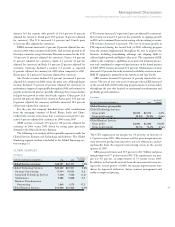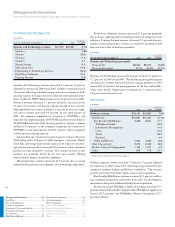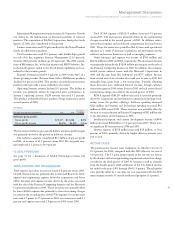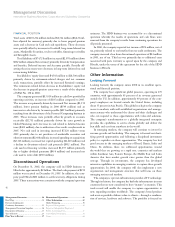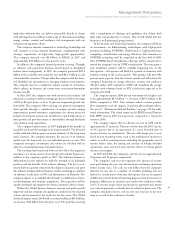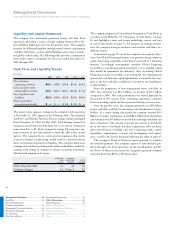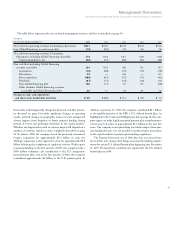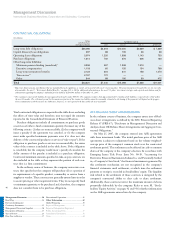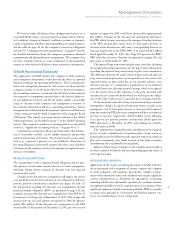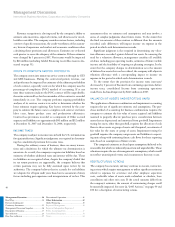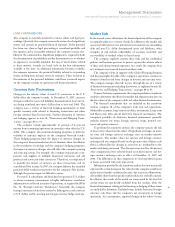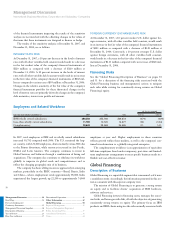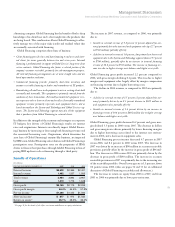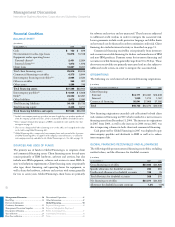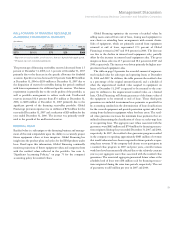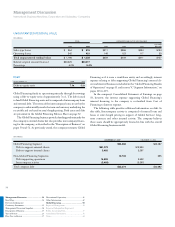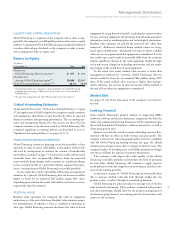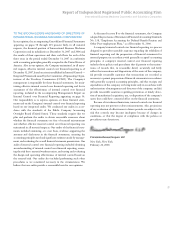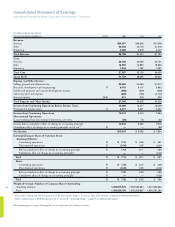IBM 2007 Annual Report Download - page 51
Download and view the complete annual report
Please find page 51 of the 2007 IBM annual report below. You can navigate through the pages in the report by either clicking on the pages listed below, or by using the keyword search tool below to find specific information within the annual report.Management Discussion
International Business Machines Corporation and Subsidiary Companies
49
LOSS CONTINGENCIES
The company is currently involved in various claims and legal pro-
ceedings. Quarterly, the company reviews the status of each significant
matter and assesses its potential financial exposure. If the potential
loss from any claim or legal proceeding is considered probable and
the amount can be reasonably estimated, the company accrues a lia-
bility for the estimated loss. Significant judgment is required in both
the determination of probability and the determination as to whether
an exposure is reasonably estimable. Because of uncertainties related
to these matters, accruals are based only on the best information
available at the time. As additional information becomes available,
the company reassesses the potential liability related to its pending
claims and litigation and may revise its estimates. These revisions in
the estimates of the potential liabilities could have a material impact
on the company’s results of operations and financial position.
Currency Rate Fluctuations
Changes in the relative values of non-U.S. currencies to the U.S.
dollar affect the company’s results. At December 31, 2007, currency
changes resulted in assets and liabilities denominated in local curren-
cies being translated into more dollars than at year-end 2006. The
company uses a variety of financial hedging instruments to limit
specific currency risks related to financing transactions and other
foreign currency-based transactions. Further discussion of currency
and hedging appears in note K, “Derivatives and Hedging Trans-
actions,” on pages 88 to 91.
The company earned approximately 47 percent of its pre-tax
income from continuing operations in currencies other than the U.S.
dollar. The company also maintains hedging programs to limit the
volatility of currency impacts on the company’s financial results.
These hedging programs limit the impact of currency changes on
the company’s financial results but do not eliminate them. In addition
to the translation of earnings and the company’s hedging programs,
the impact of currency changes also will affect the company’s pricing
and sourcing actions. For example, the company may procure com-
ponents and supplies in multiple functional currencies and sell
products and services in other currencies. Therefore, it is impractical
to quantify the impact of currency on these transactions and on
consolidated Net income. In 2007, the company believes the extended
period of dollar weakness was positive for the company’s Net income,
although the precise impact is difficult to assess.
For non-U.S. subsidiaries and branches that operate in U.S. dollars
or whose economic environment is highly inflationary, translation
adjustments are reflected in results of operations, as required by SFAS
No. 52, “Foreign Currency Translation.” Generally, the company
manages currency risk in these entities by linking prices and contracts
to U.S. dollars and by entering into foreign currency hedge contracts.
Market Risk
In the normal course of business, the financial position of the company
is routinely subject to a variety of risks. In addition to the market risk
associated with interest rate and currency movements on outstanding
debt and non-U.S. dollar denominated assets and liabilities, other
examples of risk include collectibility of accounts receivable and
recoverability of residual values on leased assets.
The company regularly assesses these risks and has established
policies and business practices to protect against the adverse effects
of these and other potential exposures. As a result, the company does
not anticipate any material losses from these risks.
The company’s debt, in support of the Global Financing business
and the geographic breadth of the company’s operations, contains an
element of market risk from changes in interest and currency rates.
The company manages this risk, in part, through the use of a variety
of financial instruments including derivatives, as explained in note K,
“Derivatives and Hedging Transactions,” on pages 88 to 91.
To meet disclosure requirements, the company performs a sensitivity
analysis to determine the effects that market risk exposures may have on
the fair values of the company’s debt and other financial instruments.
The financial instruments that are included in the sensitivity
analysis comprise all of the company’s Cash and cash equivalents,
Marketable securities, long-term receivables, investments, Long-term
and Short-term debt and all derivative financial instruments. The
company’s portfolio of derivative financial instruments generally
includes interest rate swaps, foreign currency swaps, forward con-
tracts and option contracts.
To perform the sensitivity analysis, the company assesses the risk
of loss in fair values from the effect of hypothetical changes in inter-
est rates and foreign currency exchange rates on market-sensitive
instruments. The market values for interest and foreign currency
exchange risk are computed based on the present value of future cash
flows as affected by the changes in rates that are attributable to the
market risk being measured. The discount rates used for the present
value computations were selected based on market interest and for-
eign currency exchange rates in effect at December 31, 2007 and
2006. The differences in this comparison are the hypothetical gains
or losses associated with each type of risk.
Information provided by the sensitivity analysis does not necessarily
represent the actual changes in fair value that the company would incur
under normal market conditions because, due to practical limitations,
all variables other than the specific market risk factor are held constant.
In addition, the results of the model are constrained by the fact that
certain items are specifically excluded from the analysis, while the
financial instruments relating to the financing or hedging of those items
are included by definition. Excluded items include forecasted foreign
currency cash flows and the company’s net investment in foreign
operations. As a consequence, reported changes in the values of some


